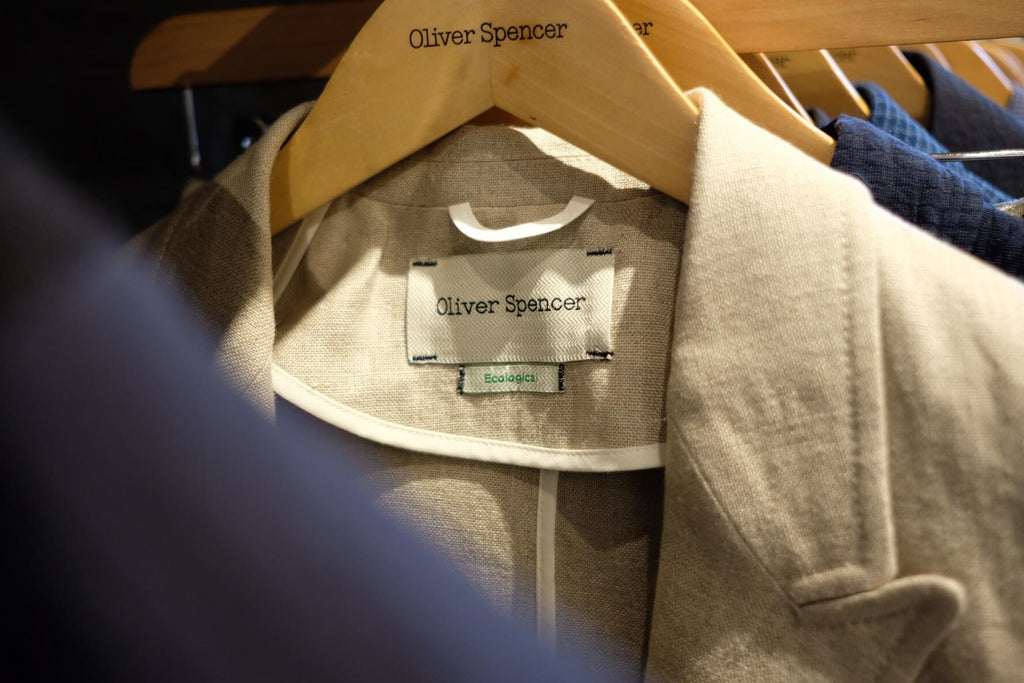For as long as we can remember, we’ve made a concerted effort to make business decisions that help us become a more environmentally sustainable brand. We could pat ourselves on our collective back and leave it at that, but we know all too well just how much room for improvement exists in the fashion industry. After the petrochemical industry, fashion is the world’s second-biggest polluter, and that’s not even considering some of the socially backward and exploitative situations that have perpetuated from the advent of fast fashion in particular.
So we want to share our goals with you for transparency so you can make the most informed choices possible. Ultimately, we want to get to the position where we are producing entirely organic and ecological collections. This is why we are increasing the percentage of organic cotton used in our collections year-on-year. It will not be an easy transition and will take us time to develop fabrics with our current suppliers as well as finding new suppliers to meet our needs. However, we are committed and hope to be mainly organic in the not too distant future (we are also using recycled cotton where possible).

Currently, our latest SS20 collection consists of approximately 40% ecological fabrics (ie fabrics which have a low carbon footprint), and 33% organic cotton. Often, when organic cotton is discussed or suggested, it isn’t always clear why making the switch to organic can have such a profound impact, but it really does. Conventionally grown cotton in some cases can be one of the most environmentally damaging and socially harmful parts of the fashion industry due to its excessive use of insecticides and water. Cotton accounts for 2.5% of world agriculture, but it uses a disproportionate 16% of world insecticides. Largely speaking, the insecticides used in cotton growing are toxic for humans and the natural environment.
By using organically grown cotton you eliminate the use of harmful insecticides, thereby increasing welfare for the growers and handlers of raw-state cotton. The carbon footprint is reduced through increased soil fertility and the elimination of greenhouse gases caused by the application of non-organic insecticides and fertilisers. Furthermore, less water is needed, not only through irrigation but also through eradicating water involved in creating non-organic inputs such as synthetic insecticides and fertilisers. Water use is subject to growing regions, but rain-fed crops are more commonplace with organic cotton, and once the water has been used it will not contaminate sources and can be used again in a productive and safe way.
Our ecological fabrics consist of recycled cotton and linen, which is another fibre that has been used for centuries and is known for its soft, breathable qualities. It has a low environmental impact due to its low water and insecticide requirements. This makes it a great option for summer clothing for practical and environmental reasons. Linen plays a key part in our spring and summer collections for these very reasons, plus the fact it looks great. All of our clothing comes clearly labelled either “Organic” or “Ecological” and we have also created an edit online so that you can explore those products exclusively.

Going forward, there are going to be lots of changes in the post-COVID fashion world. It has highlighted the many inefficiencies in our industry, but with enough critical mass, we can hopefully correct many of them. There are changes we’re currently looking at, including creating smaller collections more frequently in order to reduce wastage, so we’ll keep you posted.
If you haven’t already, we’d love for you to subscribe to our bi-weekly newsletter, where we keep our community informed on news, offers, editorial stories, and inspiration. It lands in your inbox on Wednesday evenings and Saturday mornings, full of loads of great content. You'll also get 10% off your first order.
As ever, huge thanks for being part of this amazing community. If you have any comments or suggestions, don’t hesitate to get in touch through any of our social channels.
